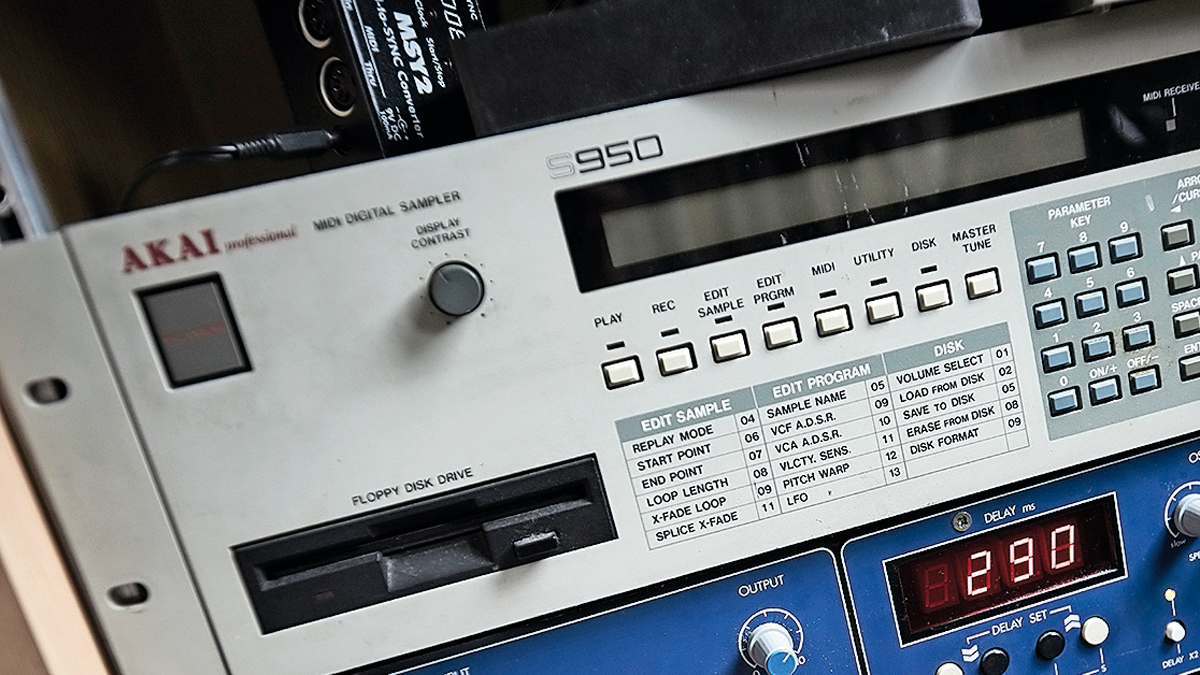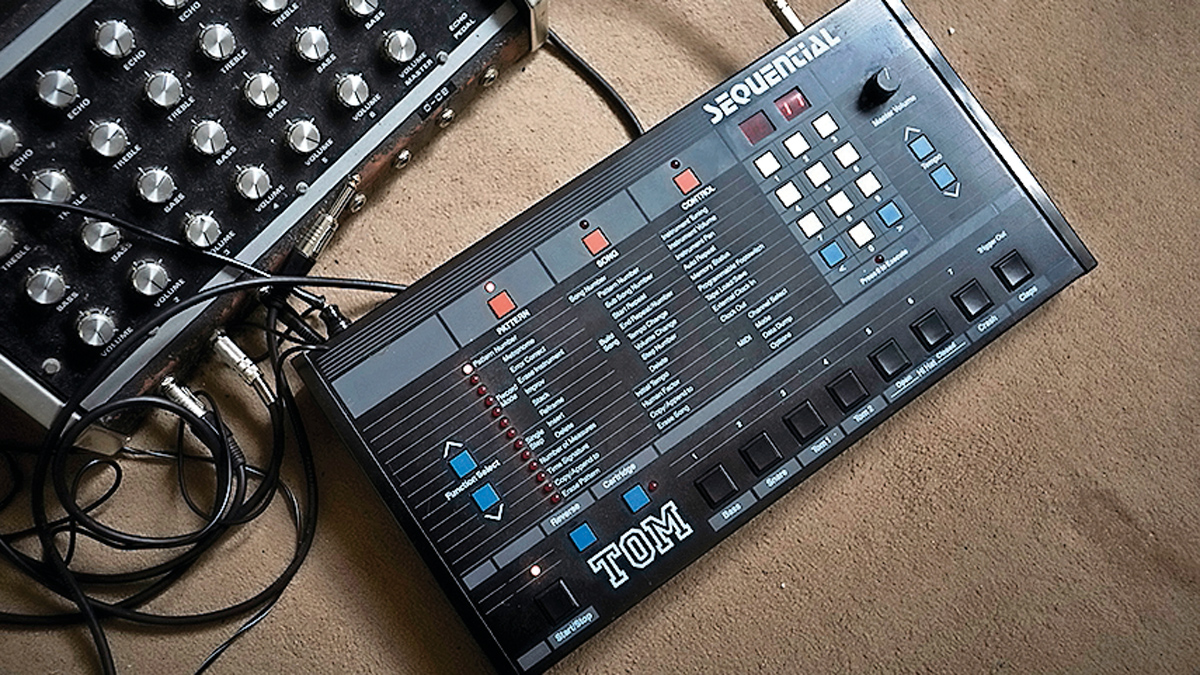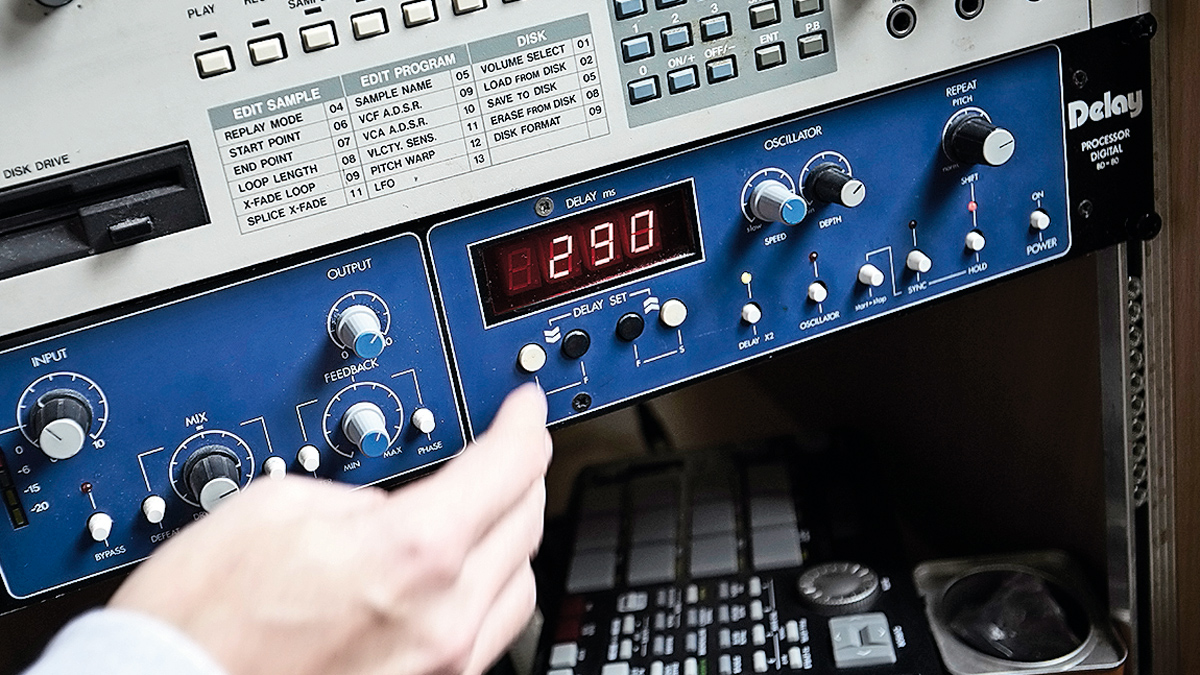In pictures: Gold Panda's studio
The sample-happy producer in his music-making habitat

Welcome
Self-confessed video game geek and producer Gold Panda's music is a product of his lifestyle, whether trawling local car boot sales seeking vinyl samples or absorbing the cultural influences and making field recordings during stints living in Tokyo and Berlin.
Before his rise to prominence as a producer, Gold Panda taught English while living in Japan, and he returned to the country last year on a photography expedition. Inadvertently collating a travelogue of audio samples, upon his return those captured sounds unwittingly became the bedrock for new material.
The latest Gold Panda album, Good Luck And Do Your Best - a title inspired by the parting words of a Japanese taxi driver - has a strangely discomforting yet soothing resonance, driven by a patchwork quilt of chopped, manipulated and layered field samples and vinyl snippets.
We headed to Chelmsford to catch up with Gold Panda in his studio.

Akai S950
“I learned to make music on this and an Atari running Cubase. The pre-loaded sinewave/test tone is great for subby bass. It sounds amazing if you sample something really fast and pitch it down.
“My uncle was using ‘real’ Cubase in the studio and showed me what it was. It just made sense really, putting blocks of notes that you’d played in on a keyboard and arranging them to trigger the sounds in the sampler. As a kid, you learn stuff really quick - I must have been 15 or 16. I also had a Mackie desk, which I used in my uncle’s living room for a while doing tunes with a mate.”

Akai MPC2000XL
“I do everything on this. I love how it sounds and I love the swing settings. The way I approach making music has been inspired by this machine and its layout.
“I’ll start by using a blank MPC every time. I don’t have any sounds saved and there are no drum folders that I can drop in. I think that’s really important, otherwise you can get lazy quite quickly and just load a lot of kick drums and audition one.
“So I’ll press play on the MPC and have a sound going on a loop and play other records over the top, pitching them up and down on a record deck until I get something that might be in tune, and if it’s a good sound I’ll sample that, pitch that again inside the MPC and build things up from there.
“I’m usually interested in the sound after the main sound. A guitar pluck or a piano note reverberation or echo can make for a really good pad sound, or your own synth sound. You also get the sound of whatever you’re recording it from, which is usually vinyl, so you’re missing some frequencies but also getting a history through the crackle of the record being loved, used and listened to.”

Modular setup
“It’s a Doepfer Case with an oscillator and a Wasp filter in it. I have friends who are using modular heavily and their music sounds amazing, but when I try to do it I can’t make anything I really like. It’s great for people who want to create their dream synthesizer but I don’t really have an emotional attachment to modular stuff.
“But now I’m finding out what I like about modules; I want to get lots of filters so I can do weird triggers rather than making synth patches. You can see everything happening and be in the moment. It’s silly buying stuff to make a modular synth when I’ve got an SH-101, which is already a mono synth.”

Vermona DRM1 MK3
“That was used on the track Time Eater, for doing the drums. Some of the hi-hats are basically the Roland-606 turned up very loud on the gain with the actual machine turned down so it’s just bleeding these sounds through.
“The only thing the Vermona suffers from, which a lot of machines suffer from, is that it sounds like a Vermona DRM1, so you have to be very clever to disguise it if you want to. But looking at it, it’s just a load of dials where you can manipulate each one without going into a menu. That’s what makes it good for performing, because you can do things that you wouldn’t do if you didn’t have access to change the sounds.”

Sequential TOM
“I got it off eBay about five years ago. It’s got a menu, which is just two numbers - or maybe four. Two correspond to the sequence and the other two for other parameters. It’s like a Roland-707, but cheaper. It’s got toms, hats, a nice clap and an OK kick drum. It sounds great and you can reverse sounds, which is amazing. It takes cartridges - I think there’s a tropical cart you can slot in.”
Future Music is the number one magazine for today's producers. Packed with technique and technology we'll help you make great new music. All-access artist interviews, in-depth gear reviews, essential production tutorials and much more. Every marvellous monthly edition features reliable reviews of the latest and greatest hardware and software technology and techniques, unparalleled advice, in-depth interviews, sensational free samples and so much more to improve the experience and outcome of your music-making.





